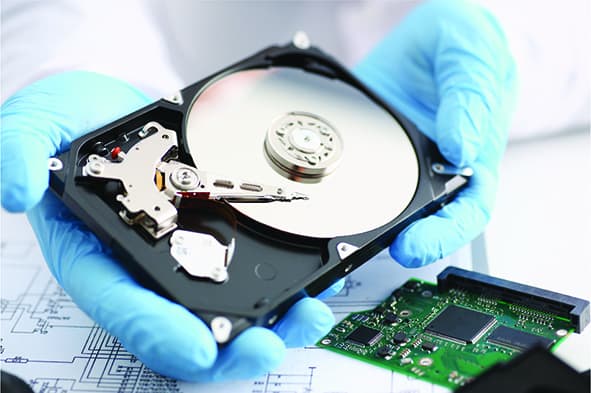Data Recovery: Reclaiming Your Lost Information

Introduction
In today’s digital world, data is integral to both personal and professional spheres. Whether it’s treasured family photos, critical business documents, or essential work files, losing data can be a significant setback. Fortunately, data recovery services offer a solution to restore lost or inaccessible information. This article explores the concept of data recovery, common causes of data loss, and strategies for recovering your valuable data.
What Is Data Recovery?
Data recovery is the process of retrieving data from damaged, corrupted, or inaccessible storage media. This can involve various types of devices, including hard drives, solid-state drives (SSDs), memory cards, and more. Data recovery aims to restore lost information to a usable state, allowing users to recover files and continue their work without significant disruption.
Common Causes of Data Loss
- Hardware Failures: Mechanical issues in traditional hard drives, such as head crashes or spindle motor failures, can lead to data loss. SSDs, though more resilient, can also suffer from controller or memory cell failures.
- Accidental Deletion: Users often delete files unintentionally, whether by emptying the recycle bin, formatting a drive, or other accidental actions. Once deleted, recovering these files can be challenging but not impossible.
- Software Corruption: Corruption of the file system or operating system can render data inaccessible. This includes issues like partition corruption, damaged databases, or software bugs.
- Physical Damage: Physical harm to storage devices, such as drops, spills, or exposure to extreme temperatures, can damage the device and lead to data loss.
- Virus or Malware Attacks: Malicious software, including viruses and ransomware, can corrupt or encrypt files, making them inaccessible without specialized recovery tools or decrypting processes.
How Data Recovery Works
- Diagnosis: The recovery process begins with diagnosing the extent of the damage to the storage device. This step involves assessing whether the issue is hardware-related, software-related, or a combination of both.
- Data Extraction: Depending on the nature of the damage, data recovery professionals use specialized tools and techniques to extract data. This might involve cloning the affected drive, accessing raw data sectors, or bypassing damaged components.
- Reconstruction: If the data is fragmented or corrupted, the next step involves reconstructing and repairing the data. This could mean rebuilding file systems, recovering lost partitions, or repairing corrupted files.
- Verification and Restoration: After extraction and reconstruction, the recovered data is verified to ensure its integrity and completeness. The final step involves restoring the data to a new or repaired storage medium and delivering it to the user.
Data Recovery Tools and Techniques
- Software Solutions: Many software tools are available for data recovery, designed to address specific issues like deleted files or corrupted file systems. These tools often provide user-friendly interfaces and can be effective for less severe cases of data loss.
- Hardware Solutions: For more serious issues, such as physical damage or complex failures, hardware-based solutions may be necessary. This involves using advanced diagnostic equipment and repair techniques to recover data.
- Professional Services: When DIY methods fail or the data loss is particularly severe, professional data recovery services are often the best option. These services offer specialized expertise, tools, and facilities to handle complex recovery scenarios.
Preventing Data Loss
- Regular Backups: Regularly backing up your data to multiple locations, such as external drives and cloud storage, is one of the most effective ways to prevent data loss. Automated backup solutions can ensure that your data is continuously protected.
- Use Antivirus Software: Protect your devices from malware and viruses by using reliable antivirus software and keeping it up-to-date. This helps prevent data corruption and loss due to malicious attacks.
- Handle Devices Carefully: Physical care of storage devices is crucial. Avoid exposing them to extreme temperatures, water, or physical shocks, and handle them gently.
- Monitor Device Health: Regularly check the health of your storage devices using diagnostic tools. Early detection of potential issues can help prevent catastrophic failures and data loss.
Conclusion
Data recovery is a vital process for retrieving lost or inaccessible information, and understanding how it works can help you make informed decisions when faced with data loss. Whether you choose to use software tools, seek professional help, or implement preventive measures, taking proactive steps can safeguard your valuable data and minimize the impact of potential data loss. In an age where data is crucial, having a strategy for recovery and prevention ensures that your information remains secure and accessible.
